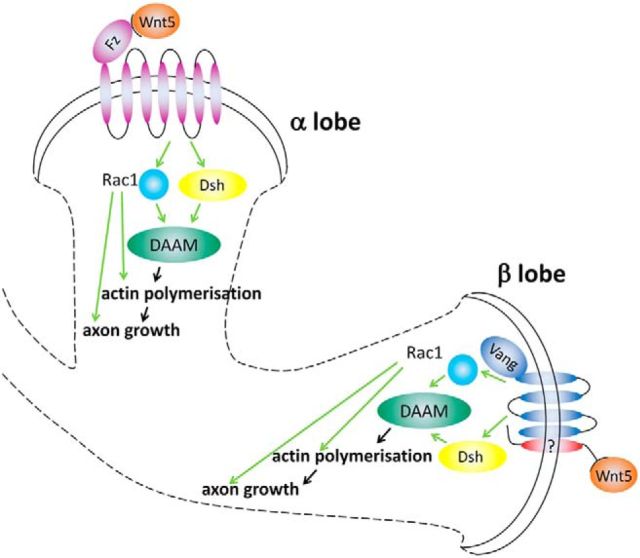Figure 10.
Hypothetic model for PCP signaling during axon growth in the MB. In α lobes, axon branch extension appears to be controlled by the Fz receptor, which presumably perceives a Wnt signal. Once activated, Fz recruits Dsh, and potentially Rac1, which will both contribute to the activation of the formin dDAAM, a cytoskeletal effector element involved in filopodial actin polymerization. In the β lobes, Wnt5 and Vang cooperate, most likely through an as yet unidentified coreceptor, to promote β lobe extension by signaling to the same or a similar Dsh/Rac1/dDAAM module that is at work in the growth cone of the dorsally running axons. Thus, we propose that Dsh, Rac1, and dDAAM form the core of a common effector system, which is used by both the dorsal and ML-specific guidance cues to direct changes of the actin cytoskeleton in the growth cone of the MB axons.

